There is a common misconception that succulents will happily soak up full, blazing sun all day long, no matter how hot it gets. Sound familiar? But when you try it in the summer, you may find your once lovely plants scarred or collapsed. Succulent sunburn is not just unsightly, but dangerous for your plants’ health. Let’s look at how best to protect your succulents from the heat of summer.
Succulent Care in Summer
In this Post We'll Cover:
{Please note, some links in this post may be affiliate links to sites that pay me a small commission if you click on the link and make a purchase. This commission is at absolutely no cost to you. I only recommend products and companies that I have worked with and truly love! ~Kat}
Can Succulents Get Too Much Sun?
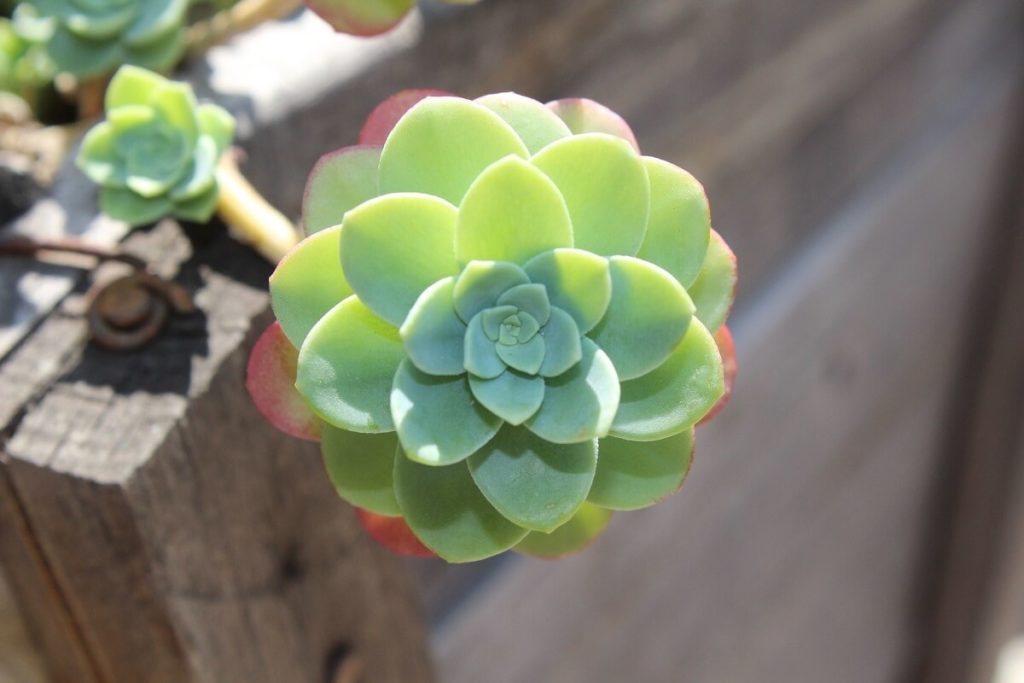
Sunlight is essential for photosynthesisPhotosynthesis (FO-to-SIN-thuh-sis) is the process plants us... More — which is necessary for succulents and all plants. But a sunburned succulent cannot photosynthesize through the sunburned tissue on its leaves. Too much sun can be damaging, or even fatal for your succulents.
It is certainly true that succulents love sunshine, and many will thrive in direct sun for part of the day. They also do well with warm temperatures of 80 degrees (27°C) or above. But when you combine the two, direct sun on an 80+ degree day, your succulents may start running into trouble. Just as you might be quite comfortable sitting in the sun for an hour at 70 degrees (21°C), yet need to take cover after just 15 minutes at 80 degrees (27°C).
It is UV rays and the intensity of the sunlight that will burn your skin or your succulent — not the heat. However, the higher heat also leads to water loss and higher core temperatures for you both, which makes you both more susceptible to physical damage, including sunburn.
Early Signs of Succulent Sunburn
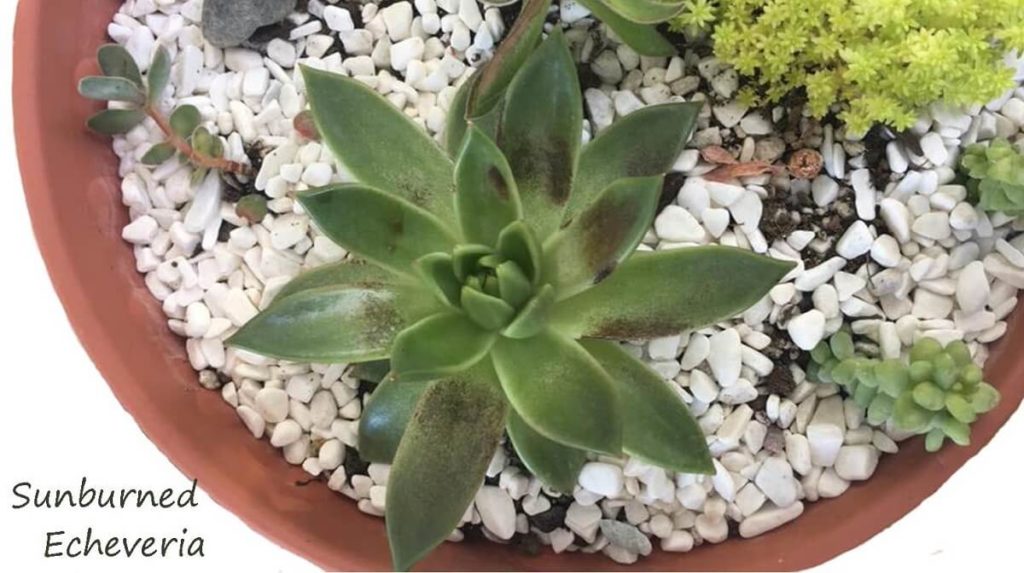
When a succulent is in too much sun, it will become stressed. If the succulent is introduced to this stress gradually, it may be able to adapt to the extra heat and light by producing brightly colored pigments. But if the increased light is too much at one time, it will become sunburned. You will see discolored patches develop on the leaves. Typically, these patches will be a pale beige, tan, brown or black in color, and they will occur across the top of the leaf. They have a rough texture at odds with the smooth feel of the leaf. These patches are burned tissue of the leaf’s skin – succulent sunburn.
A sunburned succulent is scarred. The dark, discolored patches on the leaves are permanent where they develop. However, if you look closely at the photo above, you will see that some of the leaves still show a pale beige color at the base of the black. It almost appears like a sheen on the leaf, and the texture remains smooth. This is the first sign of impending succulent sunburn, and it is reversible at that stage. If you catch it at that stage and promptly provide shade before the true scarring occurs, the results are not so unsightly, and in short time, the leaf will heal.
The Echeveria above was left in the sun until the black patches of true succulent sunburn developed. It has taken some damage and is scarred, but overall, the plant remains healthy. The damage is largely cosmetic. The sunburned leaves have not collapsed. They are still capable of photosynthesis in the green portions. And each is still capable of transmitting moisture and nutrients through its cells. In time, the plant will continue to grow from the center, and these burned leaves will eventually drop away as the plant naturally sloughs off the older foliage. Alternatively, you could remove the damaged leaves now for propagation. This degree of sunburn will not harm the leaf’s chance of rooting and forming a new baby plant.
My thanks to Samantha Jen, for the use of this photo!
Prompt Action is Important – Sunburn Progresses
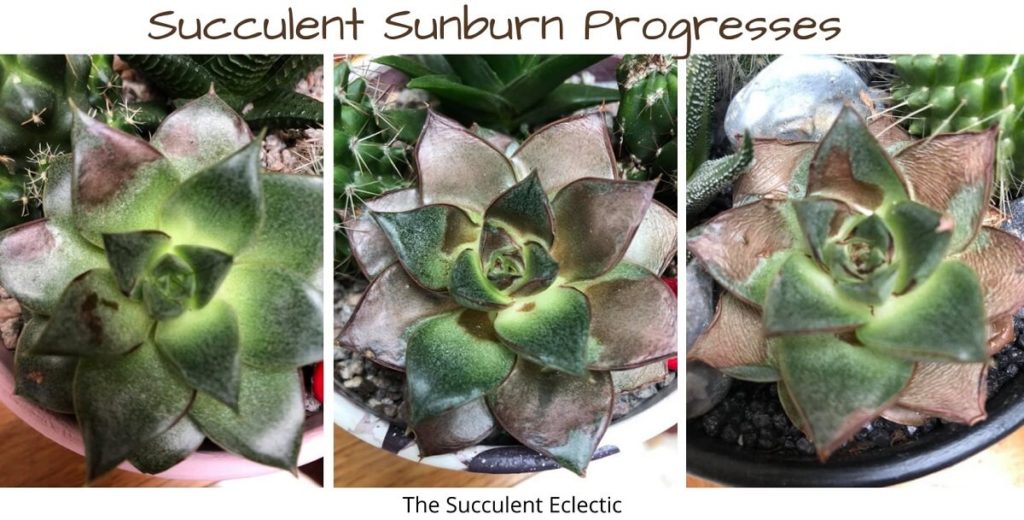
It is essential to respond promptly to the early signs of succulent sunburn. If you leave your succulent in the same place when it is beginning to burn, the sunburn progresses and becomes more severe. If the Echeveria above had been moved into some shade immediately, just a few leaves would be scarred, but the plant would remain healthy. In the second image, more than half the leaves are badly scarred, and no longer capable of photosynthesis. But you can see from the vitality of the green leaves that the plant still has a lot of energy to put toward recovery or propagation. By the third image, the scarred leaves are wrinkling badly and beginning to collapse. You’ll also note that the green leaves are becoming more grey as the plant’s health and energy are deteriorating.
If you notice your succulents are starting to burn, take action to protect it, or the damage will worsen.
Thank you, Cosetta, for the use of these images!
Sunburned Succulents
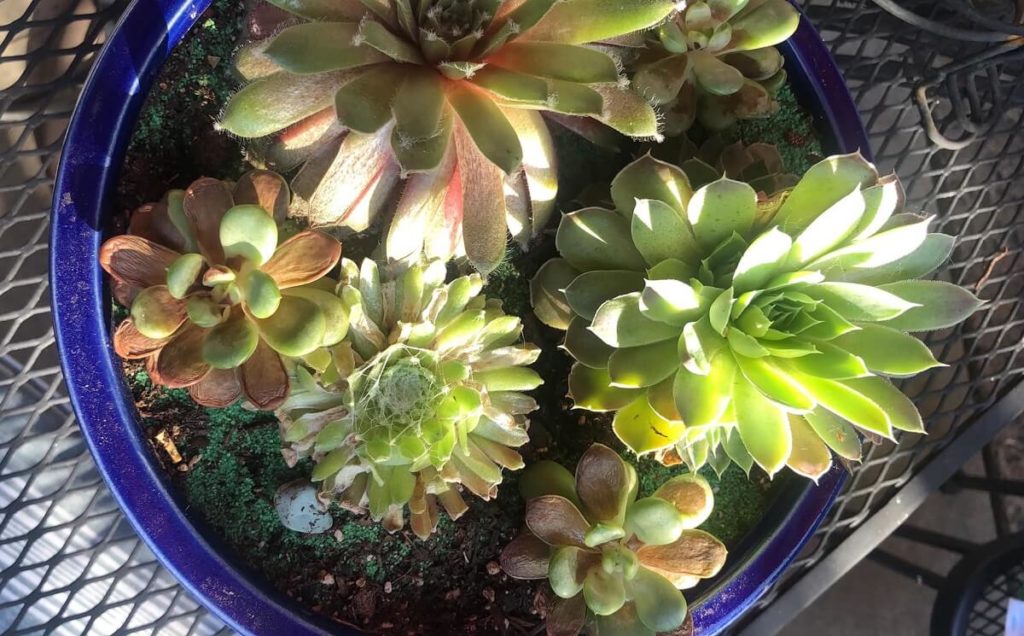
Different succulent varieties and individual plants will respond differently to excessive heat and sun. The Echeveria at the front right and the one on the left show severe sunburn on most of their leaves. If the container is moved into more shade, the Echeveria may outgrow its scarred leaves, or they can be used to propagate more plants. The Sempervivum in the middle has produced so much carotenoidCarotenoid (Kair-AH-ten-oid) is a yellow, red or orange fat-... as it tries to adapt to the current conditions, it has completely bleached out its coloring. And the leaves are just starting to burn. If given prompt shade, this plant will green up again in time. The Echeveria in the back right isn’t even stressed!
Thank you, Graciela Kaplan, for the use of this photo!
Sun Damaged Succulents
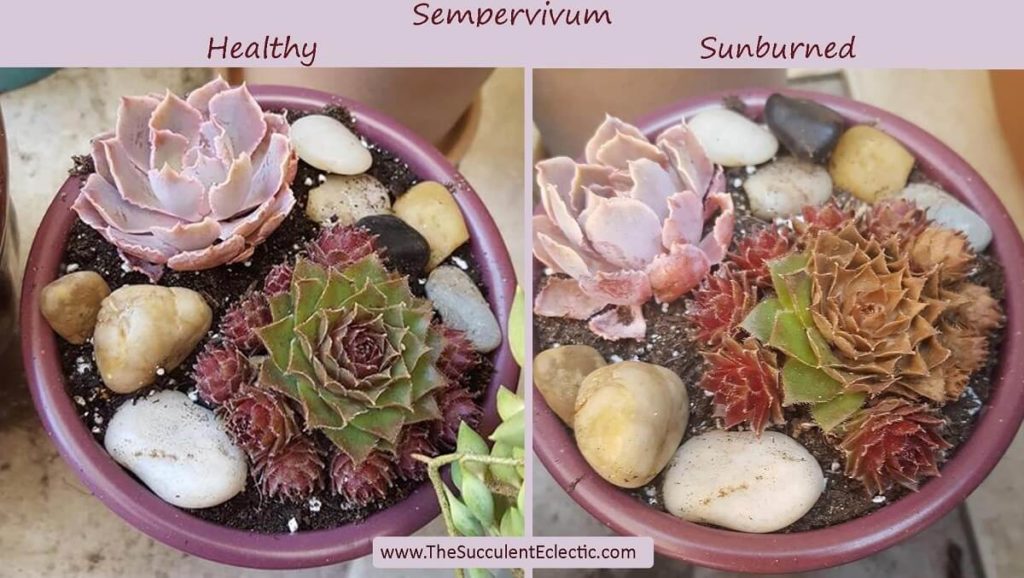
Some succulents, like agave and aloe, can tolerate full summer sun. Other varieties, like sempervivum and aeonium, are more likely to have trouble as the summer temps rise. But it is important to keep a close watch on all of your collection.
Succulent sunburn has badly scarred this Sempervivum, and it many of the leaves are dead. But there are still some healthy leaves, and some of the pupsSucculent pups are the baby succulents that form at the base... still appear to be healthy. Though they are clearly stressed, as evidenced by their color, the pups do not appear to be scarred. They should happily root, grow and mature, and it is likely that the mother plant will survive to propagate further if it is immediately provided with shade. The Echeveria is not damaged yet, but it is experiencing some stress.
Debbie Bray – Many thanks for the use of these images!
Succulent Sunburn Can Be Deadly
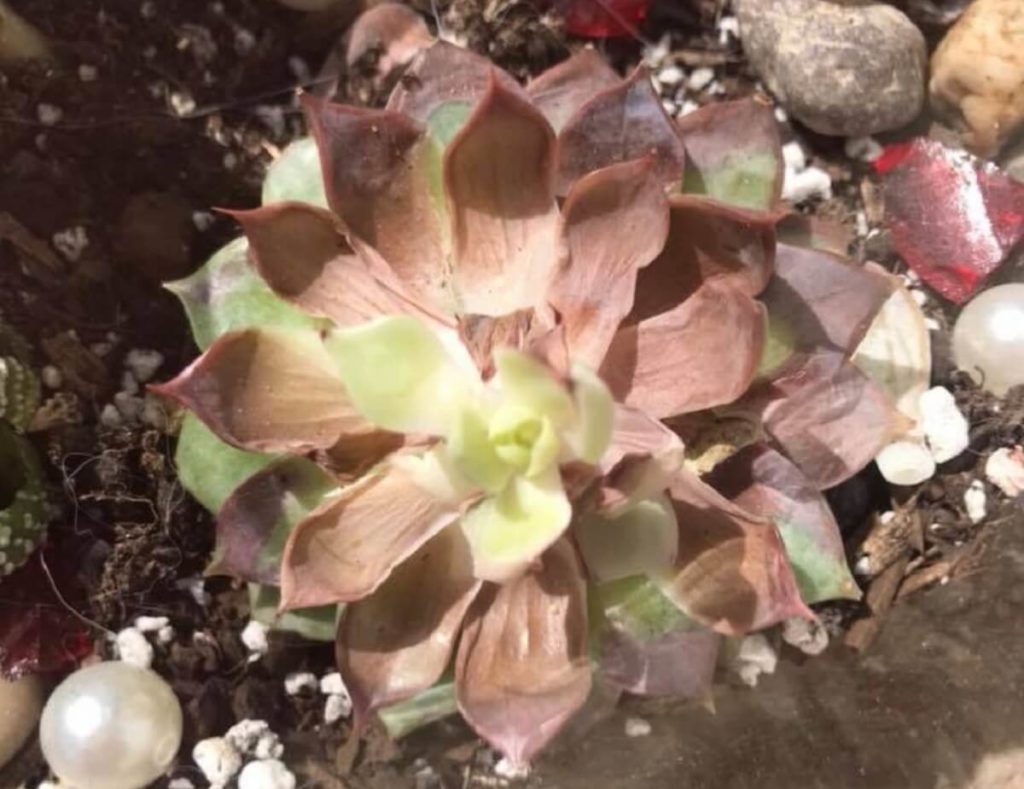
Sadly, succulent sunburn can be deadly. If this Sempervivum had spent just one more day in full sun, I believe it would have died outright. As it is, it will struggle mightily to survive. The newest leaves in the center do look healthy. Most of the scarred leaves have collapsed, and are no longer able to either photosynthesize or to transmit moisture or nutrients. Some of the lower leaves that remain green may be capable of sustaining the plant while it produces new top growth. But one more day of damage would surely have made this impossible.
Different succulents need different levels of sunlight. But take care moving even a sun-loving succulent from a shaded growing spot to more sun too fast. It is truly worthwhile taking the time to adapt them slowly to the right amount of light. For a guide on judging when your succulents need more or less light, read my post on etiolated succulents and the signs they give regarding light exposure.
Once you have determined the proper place for your succulent, you must continue to monitor it throughout the year. A plant that gets full sun in early spring and loves it, may fry in the same spot come summer. That is what happened with some of the photos above. I wish I better understood the science and mechanisms behind succulent sunburn so that I could better explain it for you. Suffice it (for now) to say – as the temperatures rise, the intensity of the sunlight also increases. And this can become damaging to your succulents — or even deadly.
Thanks so much, Rachelle Lagimodiere, for the use of this photo!
Protect Your Succulent from Sunburn Like the Pros Do
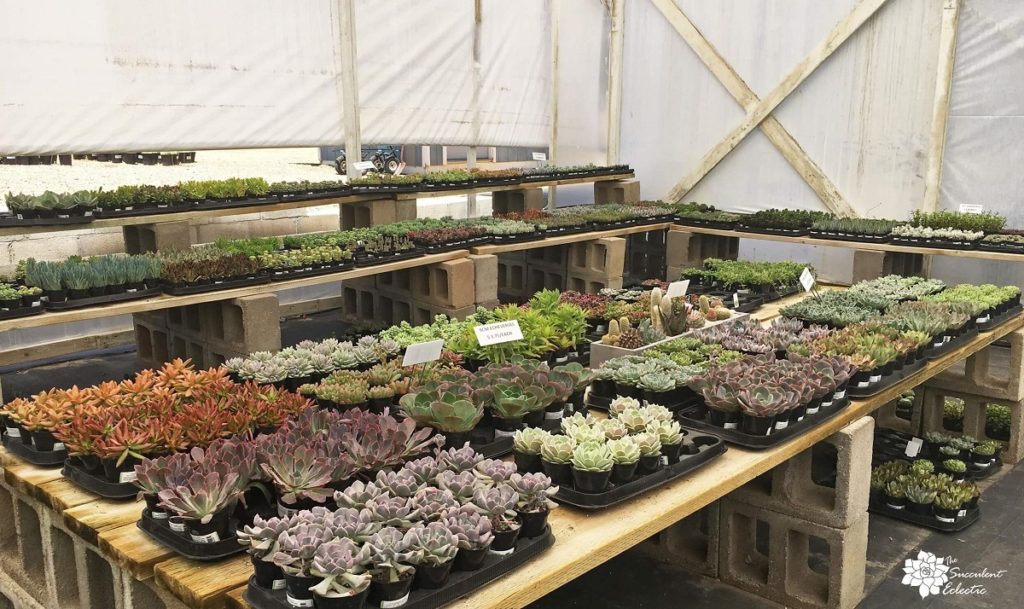
Using shade cloth is the best way to protect your succulents from damage due to excessive heat and/or sunlight.
Shade cloth is a special fabric designed to protect plants from sun damage while permitting some sunlight to filter through. It protects against the buildup of heat in the plants’ tissues and blocks a good portion of UV rays. Professional succulent growers typically grow their plants under shade cloth to keep them looking their best for resale. While this practice certainly works for making the sale, an unwary succulent grower may take a well-sheltered succulent and put it straight into direct sun, resulting in a fried or collapsing plant. Always introduce succulents to more light gradually. And assume the plant you just purchased was heavily protected by shade cloth. Give it bright shade in your garden, and move to more light carefully. Add just a half hour of light every 2-3 days and watch the plant carefully for signs it wants more or less light.
While I do not protect all of my succulents with shade cloth full time, all year round, many people do. I prefer that they grow more hardened to environmental stress. But during the heat of summer, I do rig shade cloth structures for them. And I strongly encourage those who garden in fierce heat or desert areas to use shade cloth year round. If you are uncertain whether your succulents need more sun — use shade cloth. It is the easiest way to balance the succulents’ need for sun with protection from sun damage at any time of the year. It also gives you so many more options for light exposure in your garden for a wide variety of plants.
Selecting Shade Cloth to Protect Succulents
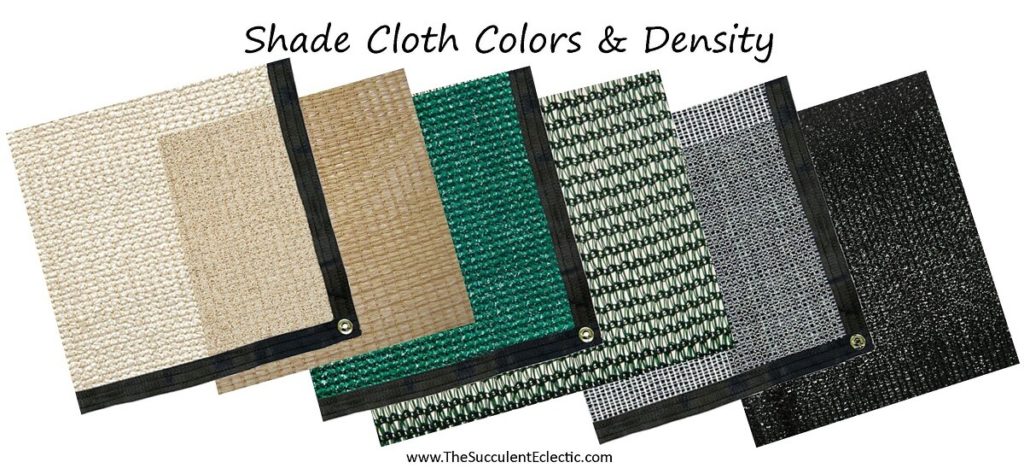
Shade cloth comes in a number of different colors and densities, rated from 5% – 95% shade. Do not confuse the colors with the density. Some white shade cloth blocks 60% of the sunlight, while some black shade cloth blocks just 40%. I prefer white or light beige or tan because it is cooler for my plants, and the colors make more sense to me in the garden. But all shade cloth cuts UV rays and provides shade that is 10-15 degrees cooler than the temps in full sun. You should select your shade cloth by density, first, then go with a color that appeals to you. Select a shade cloth that provides at least 35% shade up to 70% shade – depending upon your climate. Use a higher density in hotter climates.
Shade cloth is also highly resistant to damage from UV rays, water and wind, so it lasts for many years worth of constant use.
Use Shade Cloth to Protect Against Succulent Sunburn
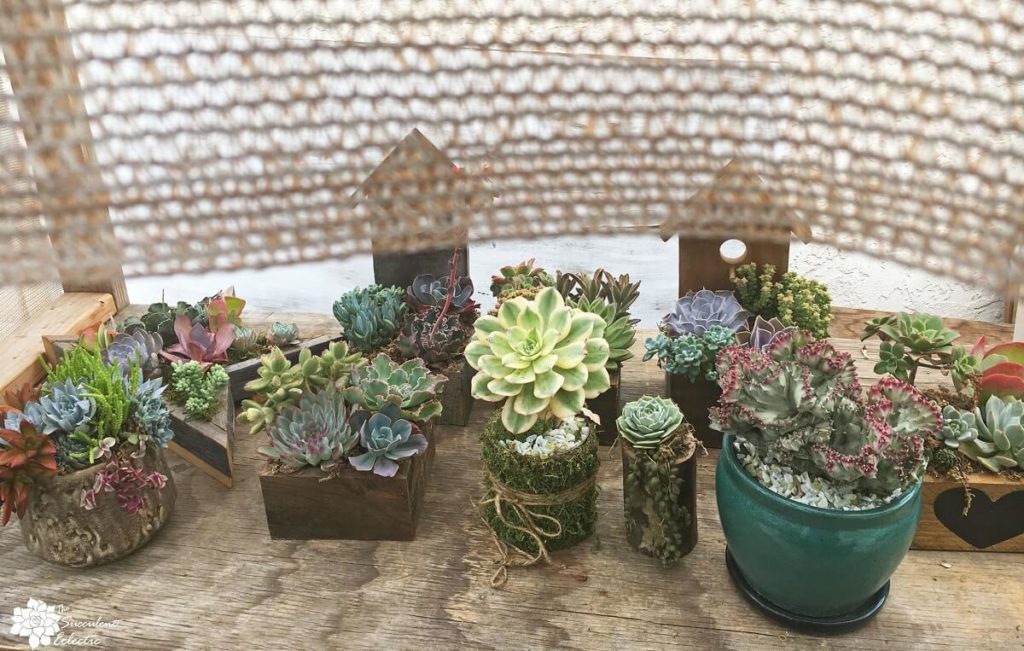
I have rigged my different shade cloth structures using frames made from 2×2’s, 2×4’s and PVC pipe (not all in the same structure). I like my succulents to get morning sun with protective shade for the hottest part of the day. That way I get the benefit of some colorful stress responses, yet keep my plants from being damaged by sunburn or excessive heat. You can also create a simple structure to shade plants in the ground from succulent sunburn.
While I prefer the ease and versatility of using shade cloth, use whatever works best for you. Some people use an umbrella, while others take a rustic approach, and set cut branches to create a sunscreen for their plants. Just be certain to protect your succulents during the heat of summer afternoons to avoid damaged, sunburned succulents.
How to Water Succulents in Summer
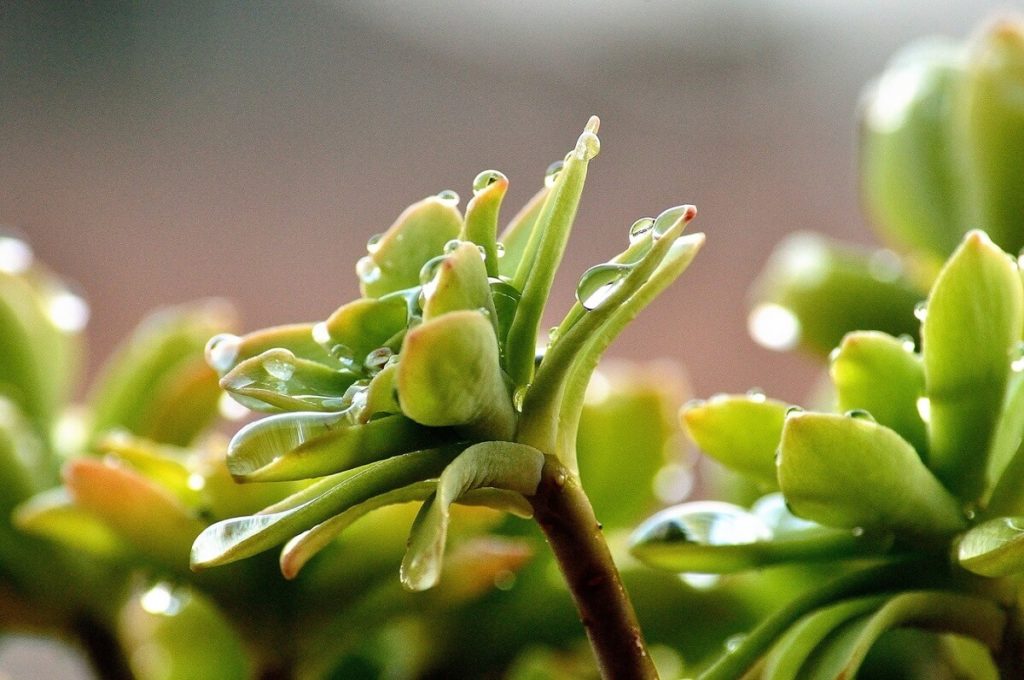
Proper watering for your succulents remains crucial in the heat of summer. Do not be tempted to water your succulents before their soil dries out. But your succulents are likely to go through water more quickly in the summer than in cooler months. Not only do they need the moisture, the water will help to cool their roots.
Water your succulents in the cool of the morning or the evening. That way, you avoid the risk of applying sun-heated water, which can scald or even cook the roots. Plants grown in the ground will not suffer the heat at their roots as much as do plants in containers. In the ground, they are well insulated by the earth all around them. In pots, the container itself transmits the heat to the small bit of soil within. There is nowhere for the heat to escape. Although I take care not to water my plants in the heat of the day, I do periodically wash down the pots to cool them a bit.
Summer Care for Succulents
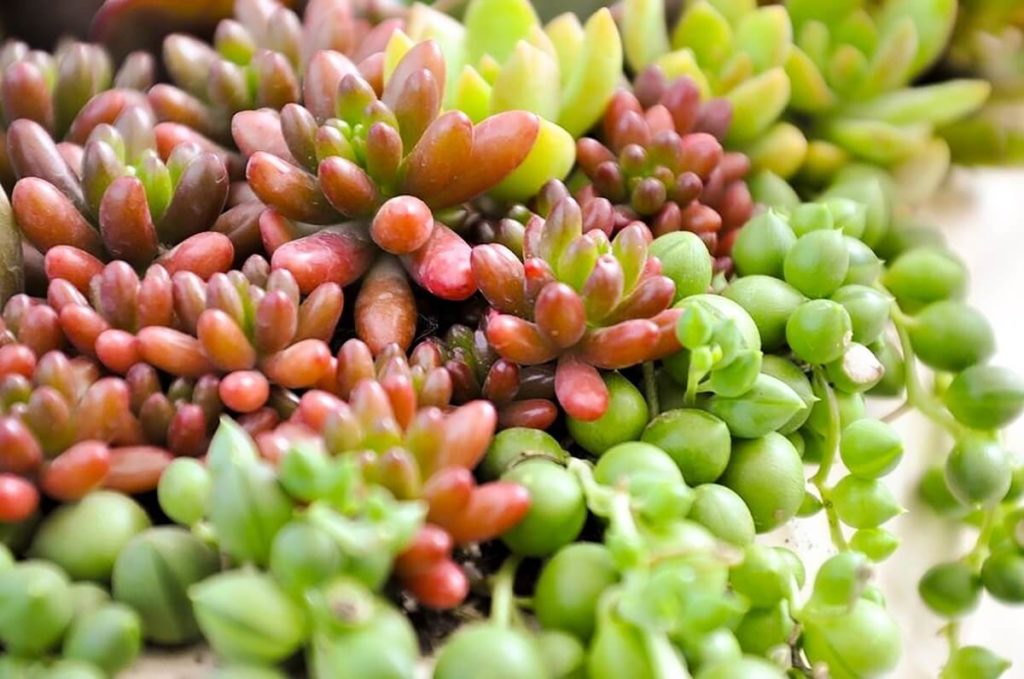
Summer care for succulents turns out to be very similar to the same things we do for ourselves, our kids and our pets – we all need to stay hydrated and limit time spent in direct sun.
So how are your succulents doing so far this hot, hot summer? Please take a moment to let me know how you care for your succulents in this heat. And if you have any questions, let me know! I am happy to help!
Happy gardening!

P.S. For a complete guide to succulent care, get FREE course, 7 Steps to Succulent Success, by subscribing! Thanks so much!
P.P.S. Why not join my Facebook Group for succulent-lovers? We talk succulent care, propagation, identification and design. It’s a warm and welcoming group that would love to meet you!
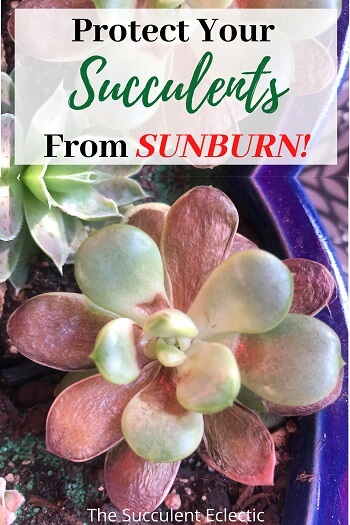
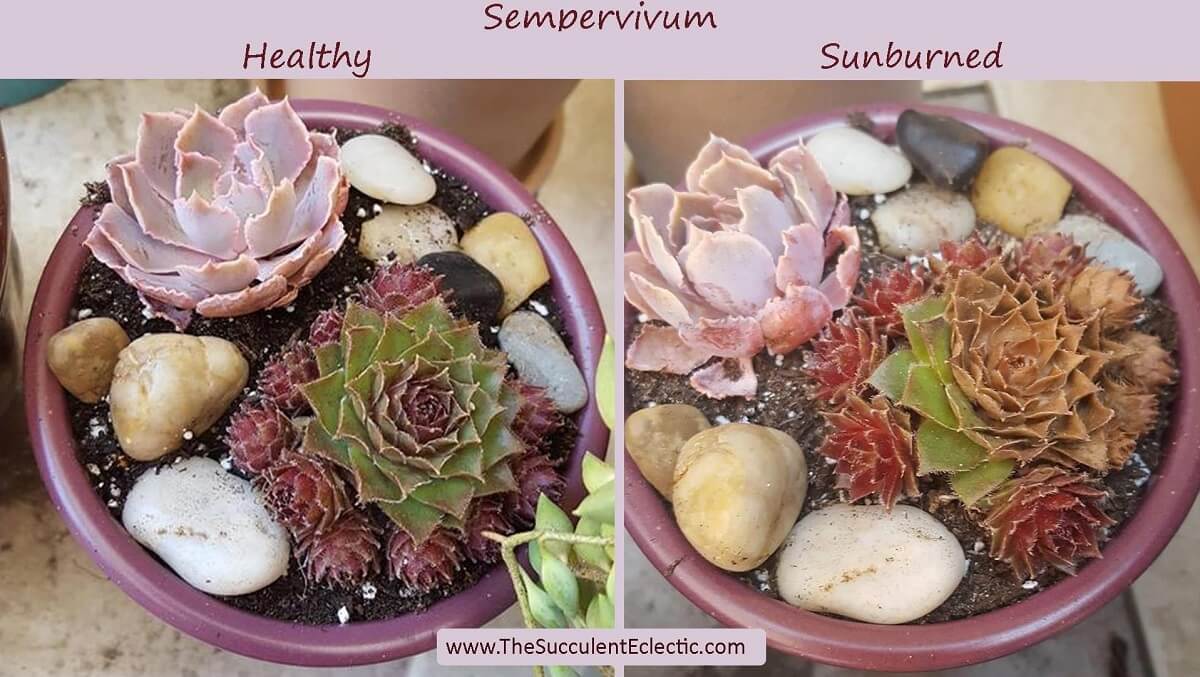

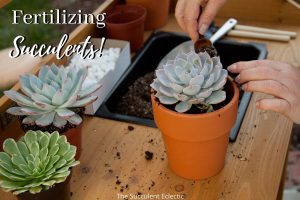
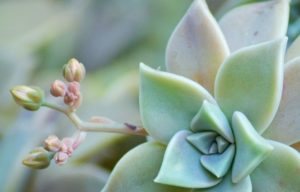
hi. this is my biggest issue. sun burn I live in upstate NY. so nit too hot. how much morning sun would you give an echeveria? my deck is shady in the summer but some get burned anyway .
Thank you
Hi Autumn,
Once your Echeveria are well acclimated to the lighting, they should be able to full sun all morning, and some late afternoon sun, too. But if the plant has been grown indoors, or under shade cloth, you’ll need to move slowly to introduce it to that much sunlight. Check out my blog post on acclimating succulents to sunshine.
Keep a close eye on where the shadows fall and when. They are likely to change over the course of the summer as the sun comes in from a different angle. It might be wise to invest in some shade cloth – it takes all the guessword out of your lighting issues.
Thanks for the great question!
~Kat
This is a great article. I live in Southern Florida and grow succulents in my screened lanai. Sometimes it is difficult to tell if I have over watered or if the plant is getting sunburned. I plant mostly in Bonsai Jacks succulent soil because when the rains come good drainage is a must. Not only is the sun an issue, but the afternoon temps reach into the 90’s. Where can I purchase a shade cloth that you showed in this article? I have never seen those before. Thanks!
Hi Anita,
I think shade cloth will be your best friend in Southern Florida! You should be able to find it at home improvement stores like Home Depot or Lowes. You can also order shade cloth online at Amazon.
Stay cool!
~Kat